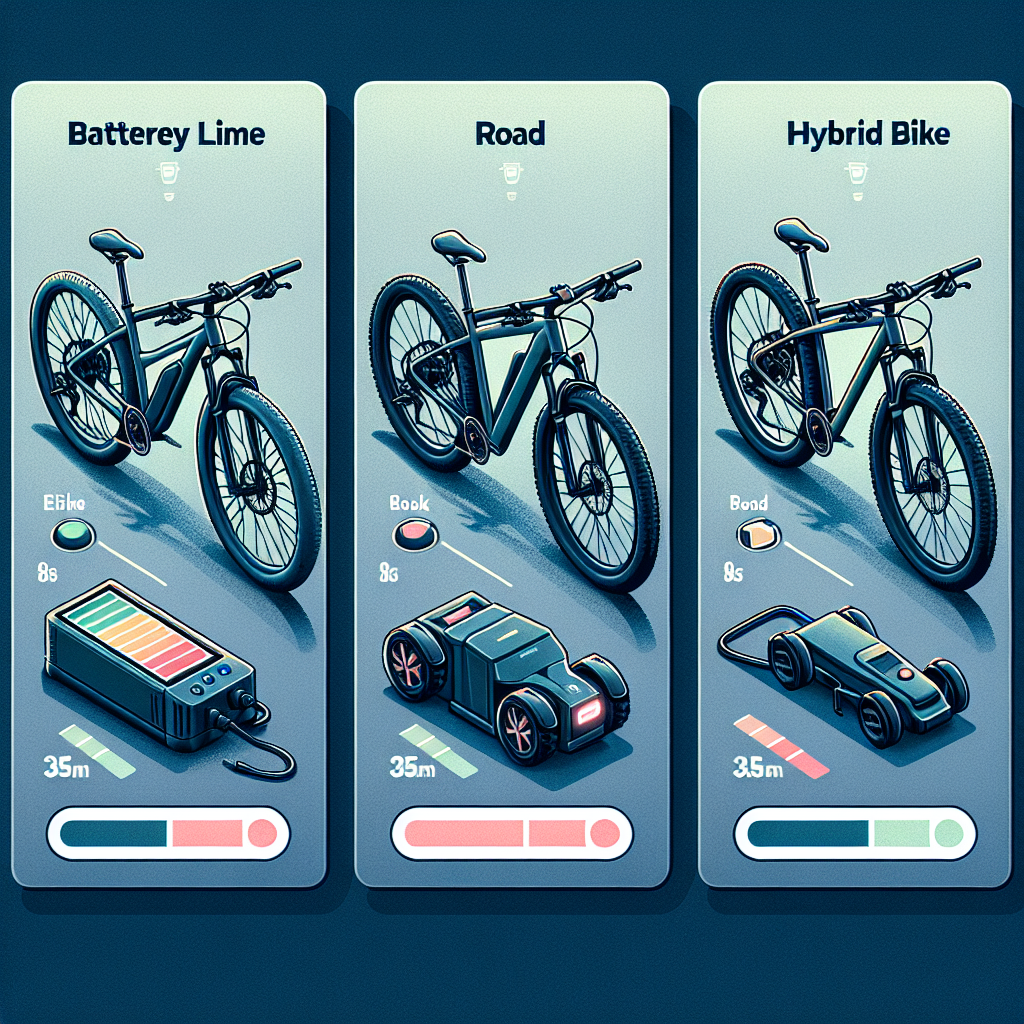Are you considering investing in an electric bike but feeling overwhelmed by the vast array of options available? Look no further! This article provides you with valuable tips for choosing the right ebike that perfectly caters to your individual needs. Whether you’re a daily commuter, an adventure seeker, or simply looking to explore the city with ease, we’ve got you covered. So, let’s hop on and get ready to find the perfect ebike companion for your exciting journeys ahead.

Consider your riding style
Road or off-road?
When choosing an electric bike (e-bike), it is important to consider your preferred riding terrain. Are you mainly going to ride on paved roads and bike lanes, or are you planning to venture into off-road trails and rough terrains? Knowing your riding style will help you determine what type of bike will best suit your needs.
Commuting or leisure?
Another aspect to consider is the purpose of your e-bike. Will you be using it primarily for commuting to work or running errands in the city? Or are you looking for a leisurely ride on weekends and exploring scenic routes? Identifying your main use for the e-bike will guide you in choosing the appropriate features and specifications.
Short or long distances?
Consider the distances you plan to cover with your e-bike. Will you be using it mainly for short rides around your neighborhood, or do you have longer trips in mind? Knowing your expected mileage will help you determine the battery capacity and range requirements for your e-bike.
Determine your budget
Set a price range
Before diving into the vast array of e-bike options available, it’s essential to set a budget for yourself. Determine how much you are willing to invest in your e-bike and set a price range accordingly. This will help narrow down your choices and prevent you from being overwhelmed by the wide range of options available.
Consider additional costs
When calculating your budget, keep in mind that there may be additional costs beyond the initial purchase price of the e-bike. These costs can include accessories like lights, fenders, and racks, as well as ongoing expenses such as maintenance, repairs, and battery replacements. It’s important to factor in these additional costs to ensure you have a realistic understanding of the total investment required.
Evaluate the motor type
Hub motor
The motor is the heart of an electric bike, providing power and propulsion. One type of motor commonly found in e-bikes is the hub motor. Hub motors are typically located in the front or rear wheel and provide direct drive power. They are known for their simplicity and efficiency, making them a popular choice for e-bike manufacturers.
Mid-drive motor
Another option is the mid-drive motor, which is located near the bike’s bottom bracket. These motors work in conjunction with the bike’s gears, providing a more natural and efficient riding experience. Mid-drive motors are often favored by riders who tackle hilly terrains or require more torque and power.
Front or rear-wheel motor
When choosing between a front or rear-wheel motor, it’s important to consider factors such as weight distribution, traction, and handling. Front-wheel motors provide a more affordable and straightforward option, while rear-wheel motors offer better traction and stability. The choice ultimately depends on your riding preferences and the type of terrain you’ll be tackling.
Check the battery capacity
Determine your range needs
The battery is a critical component of an e-bike, as it determines how far you can ride on a single charge. When evaluating battery capacity, consider your daily commuting distance or the length of your planned rides. If you only require short trips, a smaller battery capacity may be sufficient. On the other hand, if you plan to cover long distances, you’ll need a higher-capacity battery to ensure you don’t run out of power midway.
Consider battery placement
The placement of the battery can affect the overall balance and handling of the e-bike. Some e-bikes have batteries integrated into the downtube or seat post, offering a sleek and streamlined design. Others have removable batteries that can be detached for charging convenience. Consider your preferences and how different battery placements may impact the overall riding experience.
Assess the bike’s weight
Consider portability
The weight of the e-bike can greatly impact its portability and ease of handling. If you plan to transport your e-bike frequently, either in a car or on public transportation, a lighter weight option may be more suitable. However, if you prioritize stability and durability, a slightly heavier e-bike with added reinforcement may be preferable.
Evaluate frame material
The material used for the bike’s frame contributes significantly to its weight and overall feel. Common frame materials include aluminum, steel, and carbon fiber. Aluminum frames are lightweight and durable, making them a popular choice for e-bikes. Steel frames offer a smooth and comfortable ride, albeit at a slightly heavier weight. Carbon fiber frames are the lightest but tend to come with a higher price tag.
Look into the bike’s frame design
Step-through frames
Step-through frames, also known as a low-step or open-frame design, have a lower top tube that allows for easy mounting and dismounting. These frames are often preferred by riders who value convenience and accessibility, particularly for those with limited mobility or flexibility.
Traditional diamond frames
The traditional diamond frame, characterized by a sloping top tube, has long been the standard design for bicycles. This design offers excellent stability and strength, making it suitable for various riding styles and terrains. Traditional diamond frames are versatile and preferred by riders looking for a classic bike aesthetic.
Folding frames
Folding e-bikes offer the unique advantage of compactness and portability. These bikes are designed to fold into a smaller size, making them convenient for storage in small spaces or for taking on public transportation. If you have limited storage space or frequently need to combine e-bike rides with other forms of transportation, a folding frame design may be worth considering.
Consider the level of pedal assist
Single-speed pedal assist
Some e-bikes offer a single-speed pedal assist system, where the motor provides a consistent level of assistance regardless of your pedaling intensity. This system is straightforward and easy to use, making it suitable for beginners or riders who prefer a more hands-off approach to assistance.
Multi-level pedal assist
Alternatively, many e-bikes come equipped with multi-level pedal assist systems, allowing you to adjust the level of assistance based on your preference and riding conditions. These systems typically offer multiple power modes, such as eco, normal, and high, allowing you to conserve battery life when needed or access maximum power for challenging terrains.
Check the braking system
Disc brakes
Disc brakes are known for their superior stopping power and reliable performance, making them a popular choice for e-bikes. They are less affected by wet or muddy conditions compared to rim brakes and require less frequent maintenance. If you prioritize safety and consistent braking performance, disc brakes are a great option to consider.
Rim brakes
Rim brakes, also known as traditional caliper brakes, apply pressure directly to the rim of the wheel to slow down or stop the bike. While they are less expensive and easier to maintain compared to disc brakes, they may not provide the same level of stopping power, especially in wet conditions. Rim brakes are still suitable for riders with lighter e-bike models or those who primarily ride on paved surfaces.
Hydraulic vs mechanical brakes
When choosing disc brakes, you’ll also need to decide between hydraulic or mechanical systems. Hydraulic brakes use fluid to transfer the braking force, offering greater precision and modulation. Mechanical brakes, on the other hand, use cables to engage the brake pads. Hydraulic brakes generally provide better performance and require less maintenance, but mechanical brakes are often more affordable and easier to repair.
Evaluate the bike’s suspension
Front suspension
Front suspension, also known as a suspension fork, helps absorb shocks and vibrations from the front wheel, providing a smoother and more comfortable ride. This feature is especially beneficial for off-road riding or on uneven terrains. If you anticipate encountering rough surfaces or trails, a bike with front suspension will enhance your overall riding experience.
Full suspension
Full suspension bikes, also referred to as dual suspension, feature both front and rear suspension systems. These bikes excel in off-road and mountain biking scenarios, as they provide enhanced traction, control, and comfort over challenging terrain. However, it’s important to note that full suspension bikes tend to be heavier and more expensive compared to bikes with only front suspension.
No suspension
Some e-bikes, particularly those designed for urban commuting or leisurely rides, may not have any suspension systems. These bikes are often lighter and more efficient on smooth pavements or bike lanes. If your riding style does not involve rough terrains or if a more rigid feel is preferred, a bike without suspension may be a suitable choice.
Test ride and research
Visit local bike shops
To get a firsthand experience of how different e-bikes perform and feel, visit local bike shops that specialize in electric bikes. Take the opportunity to test ride various models and ask the shop staff for their recommendations based on your riding style and preferences.
Read customer reviews
Customer reviews and feedback can offer valuable insights into the performance, reliability, and overall satisfaction with specific e-bike models. Browse through online platforms, forums, and e-bike community websites to get a sense of other riders’ experiences with the bikes you are considering.
Consider warranty and after-sales support
When making a significant investment in an e-bike, it’s crucial to consider the warranty coverage and after-sales support provided by the manufacturer. Look for brands that offer comprehensive warranties, reliable customer service, and readily available spare parts. This ensures that any potential issues or maintenance needs can be addressed promptly and efficiently, providing you with peace of mind and long-term satisfaction with your e-bike.
choosing the right e-bike for your needs requires thoughtful consideration of your riding style, budget, motor type, battery capacity, bike’s weight, frame design, pedal assist level, braking system, suspension, and thorough research. By taking the time to evaluate these factors and test ride different models, you can find an e-bike that suits your preferences and enhances your riding experience. Happy cycling!

